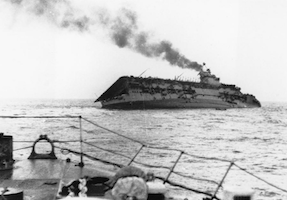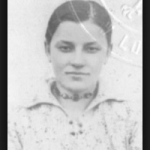German submarines sank 114 ships (more than 420,000 tons of cargo) in the first few months of World War 2, September through December, 1939. Despite these widely publicized successes – including sinking the Royal Navy aircraft carrier Courageous and battleship Royal Oak – German Rear Admiral Karl Dӧnitz was angered by a large number of torpedo misfires reported by his captains. (See blog post “The Trouble with Torpedoes, Part 2,” April 15, 2016.)
By the end of the year, complaints from the commander of the U-boat fleet led the navy to replace the head of the Torpedo Directorate, the department responsible for the design and development of torpedoes. The new chief soon reported the fleet’s torpedoes were defective in many ways, and he set about finding solutions. Yet every time the Directorate fixed one defect a new one cropped up.
Many of the problems centered on the torpedo’s detonator, or pistol, the device that exploded the warhead when the torpedo reached its target. The standard pistol for all torpedoes allowed U-boat captains to choose between a contact and magnetic detonation. A contact setting caused the torpedo to explode when it struck a ship’s hull, while a magnetic setting exploded the torpedo when it detected the magnetic field of a ship’s hull, ideally right beneath its keel.
The Directorate quickly resolved problems with the contact mode, but solutions for the magnetic mode proved more difficult because of its sensitivity. The magnetic field of a target varied with a ship’s size and was also affected by the Earth’s magnetic field. In addition, the depth setting for the torpedo was critical because if it passed too far beneath a ship it didn’t detect a magnetic field and failed to detonate.
Slowly, one by one, problems came to light involving the pistol’s magnetic detonation setting. As early as October 1939, Admiral Dӧnitz ordered his captains to use only the contact detonation setting. When the Directorate announced the design had been corrected, Dӧnitz approved using the magnetic setting again. Almost immediately misfires increased and he reinstated the magnetic detonator ban.
Even though this cycle continued with maddening regularity, German torpedoes proved effective enough in the Battle of the Atlantic to sink 1,900 ships and 10.2 million tons of cargo from 1940 through 1942. But for the flawed torpedoes, U-boats might have wreaked far more devastation during these early years, particularly because Allied anti-submarine weapons and tactics experienced their own developmental problems.
In early 1943, the Torpedo Directorate introduced a new, more dependable detonator, but the golden opportunity had been lost. While Germany was perfecting its torpedo design, the Allies had been making improvements in underwater detection technology, airborne radar, depth charge weaponry and surface tactics. U-boat captains found it increasingly difficult get into position to launch their improved torpedoes or to escape destruction once they were discovered by Allied navy hunter-killer groups.
In May, 1943, Allied navies sank 41 German U-boats, nearly three times the total of the previous month. It proved to be a turning point in the Battle of the Atlantic as the U-boats’ successes steadily declined for the remainder of the war.






